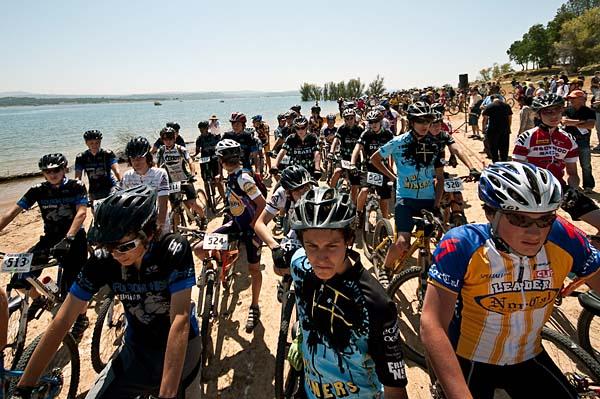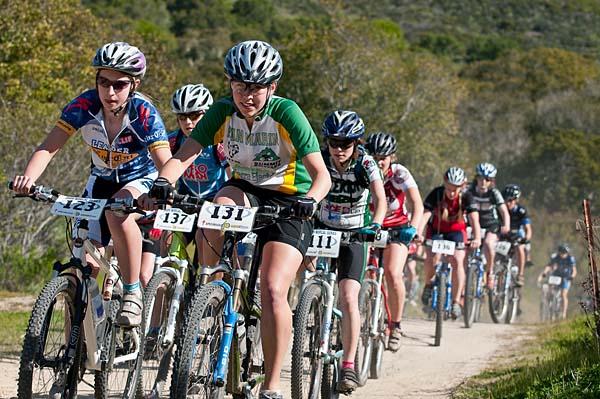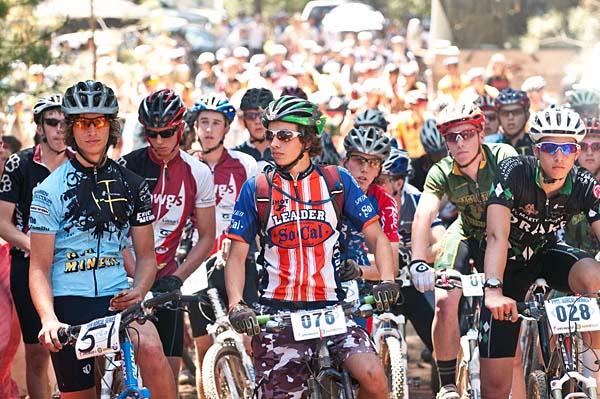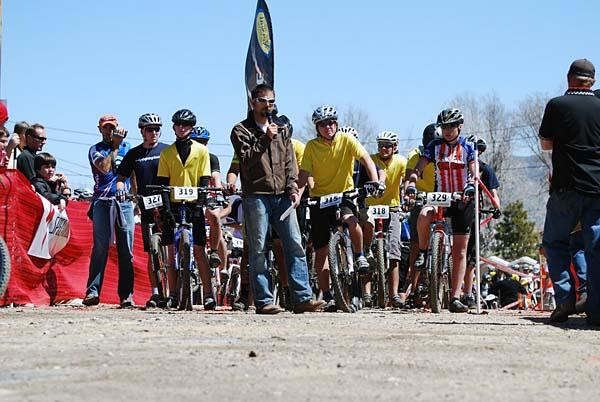High school MTB racing program goes national
NorCal League's Fritzinger to direct new American governing organization




With the intention of building upon the successful model of regional high school racing already implemented in California, NorCal League Executive Director Matt Fritzinger is taking high school mountain bike racing national. Cyclingnews' Sue George spoke with Fritzinger just as he was announcing the formation of the new National Interscholastic Cycling Association (NICA).
"Cycling's been around for over 100 years, but only now is it becoming a high school sport. That's a huge societal shift in terms of how the sport will be viewed in the future," said Fritzinger. "NICA is about being part of that movement although I don't think a lot of people believe it's possible for cycling to be a high school mainstream sport, one that's integrated with the school's culture."
Fritzinger, 38, has already proven the potential for cycling to be a hit among high schoolers. It all started 12 years ago when he was a math teacher at Berkeley High School. He put out a bulletin about starting a cycling club, and several mountain bikers responded. "We started a club with four kids who were active. Then it grew into a league."
After several years growing the NorCal League in Northern California, Fritzinger expanded the model to Southern California with the SoCal League. That's what got him thinking on a national level.
"Suddenly what we created over the years had a greater value. I wasn't sure that the experience we created in NorCal could be replicated, but it worked in SoCal," he said. "Passionate coaches came out of the woodwork and invested. At the end of the first season, we had a thriving league with over 100 students." The SoCal League, now in its second season, is directed by Matt Gunnell while Fritzinger continues, at least for the time being, in role as NorCal League Executive Director.
"Going national was the obvious next step to support the current leagues as well and new leagues," he said. "My role at NICA will be to provide services I wish I'd had [while I was] getting things started."
NICA is a sanctioning body like USA Cycling. Although there is no formal current relationship between the two organizations, they will offer some similar types services to members.
The latest race content, interviews, features, reviews and expert buying guides, direct to your inbox!
"The USAC Development Foundation was one of high school mountain biking's earliest supporters, and many of our kids go on to succeed in USAC races, especially collegiate. It's a natural step."
Sometimes the high school mountain bikers go beyond collegiate racing and into the pro ranks. Two cyclists now racing for the pro Garmin-Slipstream Team, Lucas Euser and Steven Cozza, raced in the NorCal League early in their careers.
"Out of about 100 people who were in the League programs when they were in it, two stars emerged. With 500-600 racers now, you can imagine what the impact might be if you fast forward another five to six years."
Fritzinger explained that while it's exciting to help the careers of future stars, he's more interested in supporting his racers, no matter what they do professionally after graduation. "More than succeeding as pro cyclists, seeing these kids go on to be leaders in the community is important. Many become leaders of their collegiate teams. Others go on to become strong academically. To us, that's just as important."
Looking ahead
NICA has carefully planned its growth to meet the goals of 10 states involved by 2015 and coast-to-coast leagues in the US by 2020. It projects a membership of 14,000 with roughly 5,000 athletes, 2,000 coaches, 3,200 volunteers and 4,000 families in six years.
"We're pacing ourselves early on," said Fritzinger. "We have a short list of 10 states for the next five years. It won't necessarily happen as printed. We're focusing on Colorado and Washington (state) now. As each league gets its own legs, it will free up energy for creating enthusiasm in a new area."
He mentioned Pennsylvania, Oregon, New York, North Carolina, Wisconsin, New Mexico, Arizona and Utah as next likely targets through 2015 based on inquiries and interest levels in those states.
Initially the target is one league per state, but that's not set in stone. "If it turns out down the road that a region is under-served, then we could create multiple leagues in a state like we've done here in California or like might make sense in Texas. For early success, we need to be accessible to a high enough population density."
It's been a challenging economic climate in which to start a new organization, particularly one that relies on fundraising and sponsors.
"I don't think the current economy is helping us very much," said Fritzinger, "but we are viewed as an investment and don't the wise invest when the markets are low?"
"NICA would not be here if Specialized has not set up as our founding sponsor," he said. "Specialized is providing significant start-up capital, and Easton (Sports Development Foundation II) is also offering to match the contributions of other companies that join the partnership. It's a wide-open door policy. There's no exclusivity."
NICA is in process of recruiting national-level board members that will help further its development and fundraising abilities.
A typical race
The atmosphere of a typical league race has been compared to a mini-Sea Otter according to Fritzinger.
"At the NorCal race, you have over 400 kids, their parents and their coaches. They're warming up on their trainers and on the trails. Coaches and parents are on the bikes, and there are zones with parents providing all kinds of support, such as food. Everyone's having a good time."
"Our races have three waves - four groups per waves - freshman boys, sophomore boys, etc. Courses are four to six miles with about a 50/50 singletrack and fireroad mix, so there are opportunities for passing. Ideally, there is no pavement as crashing on the pavement is the worst type. "
Fritzinger credited the success of the leagues to the parents and coaches who pitch in to help put on the race. "We have course marshalls everywhere and roving support marshalls. There's an elaborate communication system, parents doing photos, videos, etc."
Each League features four or five events per season. Cycling is a spring sport and although training can overlap with winter sports, participants can still be involved in other high school sports.
All racing is on mountain bikes. "It's most accessible in terms of cost and venue," explained Fritzinger. "It's also good for risk management."
Reactions and getting involved
Fritzinger described the reaction to the news of NICA's formation as mixed so far. "I hear things like 'Cool logo, but we like things the way they are', but they don't realize that NICA will serve behind-the-scenes needs like providing a coaching certification program and standardized curriculum. Our riders might not be excited about it, but parents will be assured to know of a program which provides backup in the form of quality of service and risk management. "
Fritzinger says most of the high schoolers are new to the sport upon involvement with the California Leagues. They get curious when they hear it is an option at their high school or they are talked into it by friends.
"The biggest obstacle to getting into the sport is not having easy access. Except for kids with rare initiative, you need fairly easy access like someone to help you get right bike, fit it, and show you where and how to ride. If you have a club at that school, you have that access."
Parents, administrators, teachers and students can get involved in NICA any time. They are invited them to call NICA any time for advice and questions as well as to attend the annual national leader's summit in October.
For more information, visit www.nationalmtb.org.
Fritzering's own high school experience
NICA Executive Director Matt Fritzinger did organized rides and triathlons when he was in high school, but not as part of an organized school sport.
"My father was diabetic, so my first big rides were fundraiser rides to find cures for diabetes. My family did them together. Athletically, I wasn't having success in sports like soccer, wrestling and track and field."
"When I was 14, I had a problem with binge drinking and at that point, I turned to endurance sports. I think that saved me.
"I did triathlons from age 16 before focusing on bike racing instead."
Fritzinger was one of just two students in his high school who raced in cycling events or triathlons. "The only other kid racing competed on the track," he said.
Sue George is an editor at Cyclingnews. She coordinates all of the site's mountain bike race coverage and assists with the road, 'cross and track coverage.